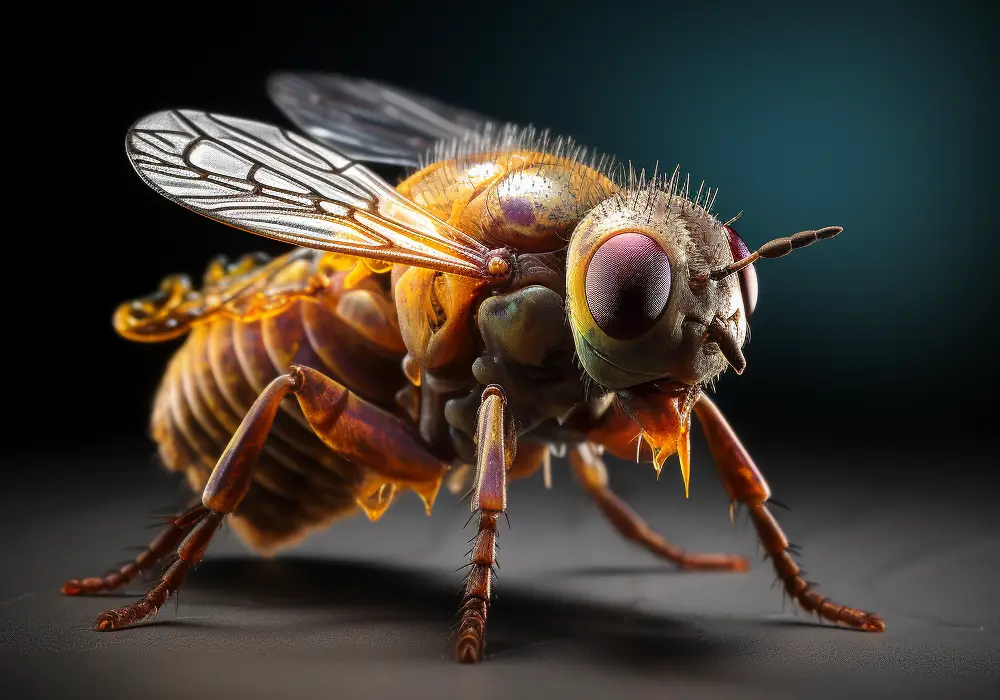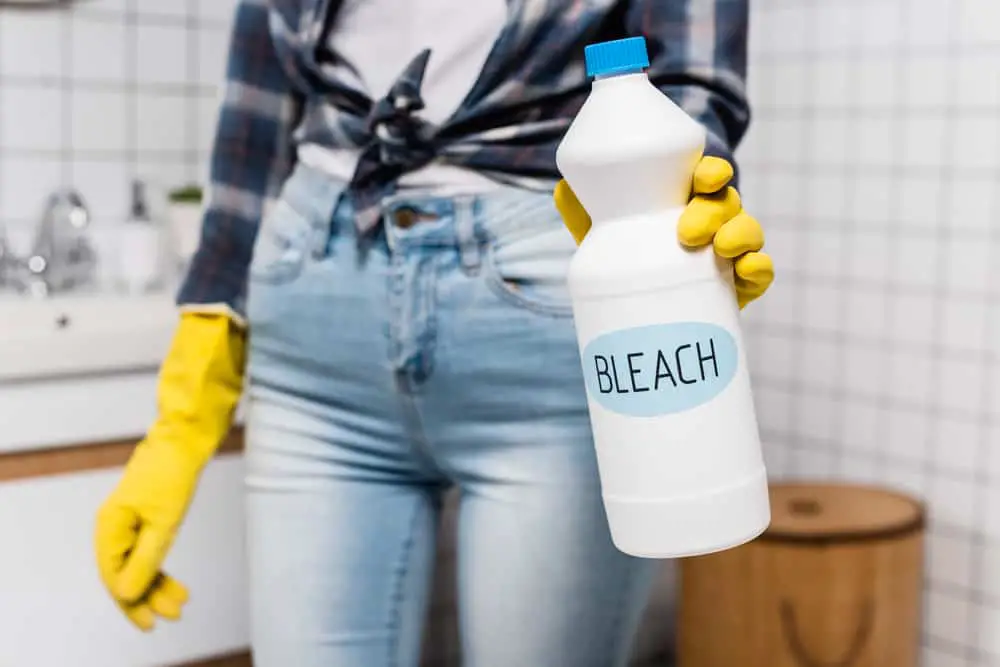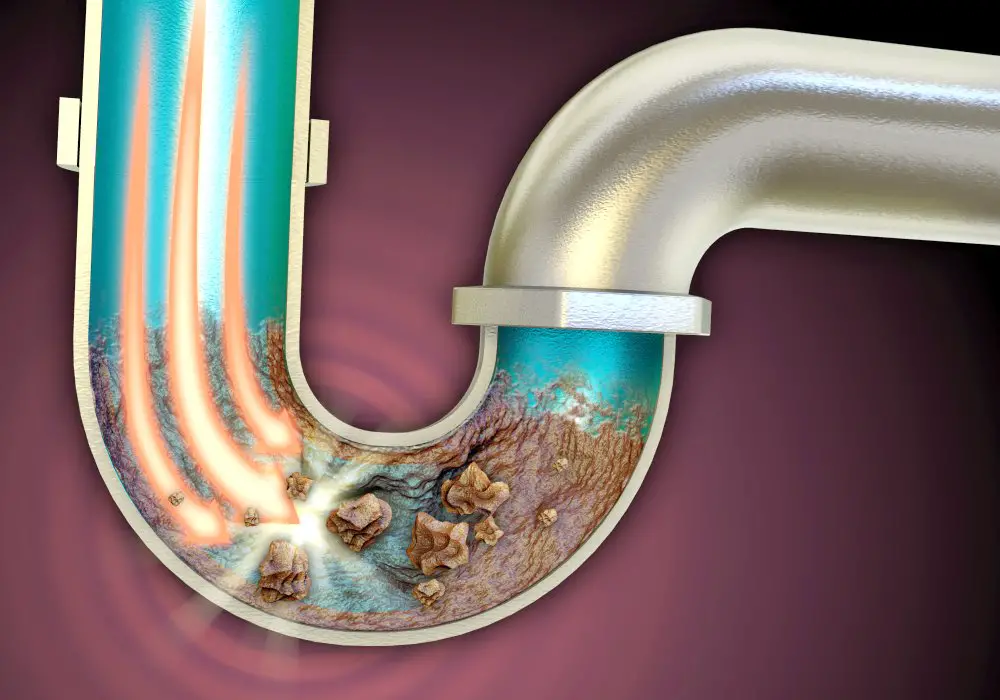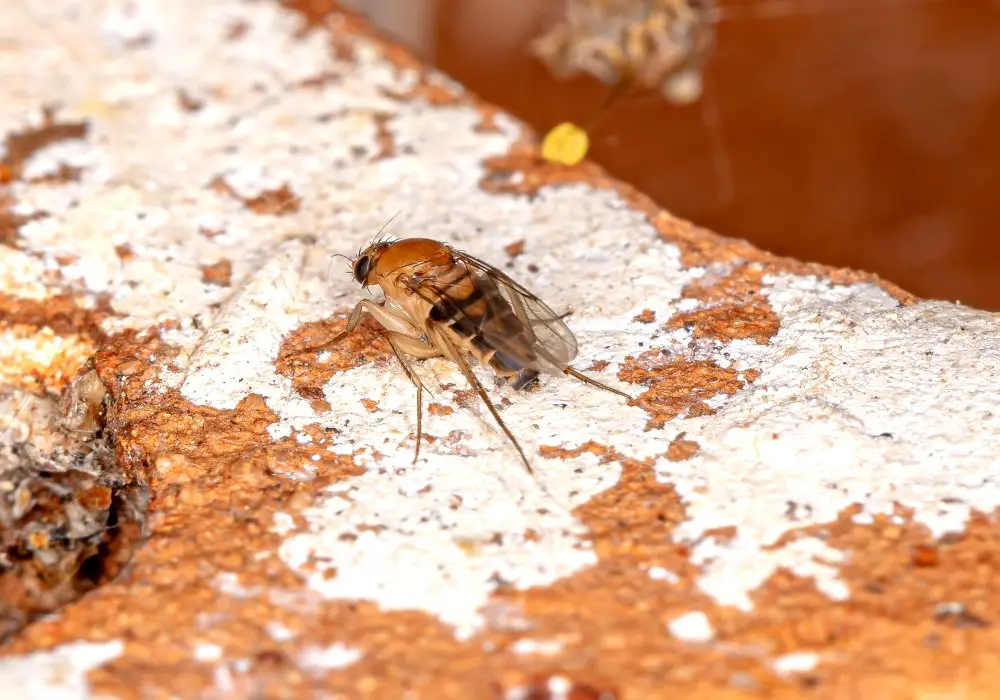Phorid flies, commonly known as humpbacked or scuttle flies, are small insects that can become a nuisance when they infest homes and commercial spaces. These flies are often attracted to damp and decaying organic matter, making it crucial to address the underlying cause of the infestation.
A common question amongst those dealing with these pests is whether bleach can effectively eliminate them.
Quick Answer:
While bleach can kill phorid flies by eliminating breeding sites in drains, it’s not always effective as it may not reach all areas. Thorough cleaning and targeted insecticides provide more reliable, sustainable control of these pests.
Bleach is a powerful disinfectant that has been used for decades in various cleaning applications. It is known for its ability to kill a wide range of pathogens and pests, including insects.
Identifying Phorid Flies

Appearance and Behavior
Phorid flies, belonging to the family Phoridae, are small insects typically measuring 1/16 to 1/8 inch (1.5-3.5 mm) in length. They exhibit a variety of colors, ranging from yellowish-brown to black.
A distinguishing feature of phorid flies is their humped thorax, which gives them a distinct appearance compared to other fly species.
Phorid flies exhibit a unique flight pattern characterized by short, erratic movements, making them easily distinguishable from other flies. They are often referred to as coffin flies due to their behavior of infesting human cadavers, especially in funeral homes and other relevant areas.
Phorid Fly Life Cycle
The life cycle of phorid flies consists of four stages:
- Egg
- Larva
- Pupa
- Adult
Phorid flies exhibit rapid reproduction rates. Adult females lay their eggs near or on decomposing organic matter, which serves as a food source for the developing larvae.
Eggs hatch within 24 hours, and the larvae undergo several instars before pupating. The entire life cycle, from egg to adult, takes approximately 25 days to complete.
Phorid flies are not only attracted to dead organisms but also to a variety of decaying materials, making them prevalent in a wide range of environments.
Due to their association with decomposing matter, phorid flies can pose a potential health risk to humans by spreading pathogens and contributing to the spoilage of food products.
Phorid Fly Infestation Causes
Phorid flies, also known as scuttle flies, are small pests that can cause a nuisance in homes and businesses.
They are attracted to a variety of conditions, making them a common problem for property owners.
Organic Materials
Phorid flies prefer to breed and feed on decaying organic matter. This can include:
- Food waste, such as fruits, vegetables, and meat
- Garbage or compost bins with rotting organic material
- Dead plants, leaves, or animals
- Feces
Keeping your home and property clean and free from such materials is a key step in preventing phorid fly infestations. Proper storage and disposal of waste, as well as maintaining the cleanliness of the area around your home, can significantly reduce the likelihood of creating a suitable breeding ground for these pests.
Moisture and Damp Conditions
Phorid flies thrive in areas with high moisture and dampness. Some specific locations include:
- Drains or pipes that hold stagnant water or organic debris
- Plumbing areas with dripping water or slow leaks
- Damp crawlspaces or basements with poor ventilation
To minimize the chances of phorid fly infestations, addressing any moisture issues is essential. Regularly clean and maintain your drains and plumbing to keep them clear of organic buildup.
Additionally, ensure proper ventilation in damp areas of your home and promptly repair any water leaks or damage.
How Bleach Can Kill Phorid Flies

Effectiveness of Bleach
Bleach is a commonly used household cleaning agent. It has the potential to kill a variety of pests, including phorid flies.
The chemical properties of bleach, specifically the presence of sodium hypochlorite, make it a strong oxidizing agent that can break down organic material. This effect can be lethal to phorid flies in situations where direct contact is made with these small insects.
However, it’s essential to understand that bleach isn’t a silver bullet for treating phorid fly infestations. While it may prove effective in killing some adult flies and larvae, using it alone won’t necessarily eliminate the entire population.
Moreover, bleach is not specifically designed for eradicating insects, so it is crucial to consider using specialized pest control products and treatments.
Using Bleach Solution for Treatment
To potentially increase the effectiveness of bleach against phorid flies, creating a bleach solution is recommended. This can be helpful in targeting both adult flies and their breeding sites.
To prepare a bleach solution for treating phorid flies, follow these steps:
- Dilute the bleach: Combine one part bleach with nine parts warm or hot water. This dilution will help in maintaining the effectiveness of the bleach while minimizing the risk of surface damage or health issues.
- Apply the solution: Pour the bleach solution into affected areas such as drains, sinks, or breeding sites. Make sure to cover the entire surface to eradicate as many flies and larvae as possible. You can also use a spray bottle or a mop to apply the solution to larger surfaces.
- Wait and rinse: Allow the bleach solution to sit for about 10-15 minutes so that it can work effectively. Afterward, thoroughly rinse the treated area with water to remove residue and prevent potential corrosion or damage.
Alternative Treatment Methods
Physical Traps
There are several types of physical traps that can be effective in controlling phorid flies. One popular method is using sticky traps, which capture the flies as they land on the adhesive surface.
These traps can be placed near areas where the flies are typically found, such as garbage bins or drains. Another option is using pheromone traps, which release chemicals that mimic the scent of the flies’ natural food source, attracting and trapping them.
Pesticides and Insecticides
Pesticides and insecticides can also be used for phorid fly control. Look for products specifically designed to target these pests, as some general-use insecticides might not be effective. Some examples of pesticides that can be used against phorid flies are:
- Pyrethroids, which are commonly found in sprays and aerosols
- Insect Growth Regulators (IGRs), which work by preventing the development of phorid fly larvae
Natural Remedies
For those seeking a more environmentally friendly approach to phorid fly control, natural remedies can be an excellent alternative.
One option is biological control using predatory insects, such as rove beetles, that feed on phorid fly larvae. This can be particularly effective in keeping the fly population under control without using harsh chemicals.
Another natural method is using essential oils with insecticidal properties. Some essential oils known to have an effect on phorid flies include:
- Eucalyptus oil
- Peppermint oil
- Lavender oil
To use essential oils for fly control, mix a few drops of your chosen oil with water in a spray bottle, then apply the solution to areas where phorid flies are commonly found.
Reapply as needed to maintain effectiveness.
Prevention and Sanitation Measures
Cleaning Drains and Pipes

To prevent and control phorid flies, focus on maintaining cleanliness and sanitation near sources of dampness and organic matter.
One such area is drains and pipes. Clear any clogs and ensure regular cleaning is in place to prevent the buildup of debris and organic materials. This will help eliminate potential breeding grounds for the larvae.
Proper Food and Garbage Disposal
Phorid flies thrive near areas with waste, especially organic materials. Maintain proper food and garbage disposal practices by:
- Regularly emptying and cleaning garbage cans
- Keeping trash bags sealed tightly
- Avoiding leaving food out for long periods of time
- Ensuring counter surfaces are clean and dry
Establishing a sanitation schedule also helps ensure effective and consistent cleaning.
Sealing Entry Points
Prevent phorid flies from entering your space by sealing entry points. Inspect doors, windows, and any gaps or cracks. Use caulk or tape to seal these areas, making it more difficult for flies to enter.
Handling Serious Infestations
Phorid flies can be quite challenging to eliminate, especially when dealing with a serious infestation. In these cases, it might be necessary to consult with a pest control company for professional help.
The first step they will take is conducting a thorough inspection to identify the source of the problem, which is crucial in implementing an effective solution.
A professional exterminator will have the knowledge and tools to get rid of phorid flies and address the underlying cause of the infestation, such as moisture or decaying organic matter. They will also provide guidance on how to prevent future infestations, ensuring long-term protection.
Using bleach can be a temporary solution to disinfect surfaces and eliminate the breeding ground. However, it may not be enough to eradicate an entire population or tackle the root cause of the problem.
A pest control expert can determine the most appropriate methods for your specific situation and apply treatments that are both safe and effective.
Keep in mind that while bleach may kill some phorid flies, it is not a long-term solution and can be harmful if not used cautiously.
Therefore, working with a professional pest control company can not only save you time and effort but also ensure the complete elimination of phorid flies and prevent any possible recurrence.


